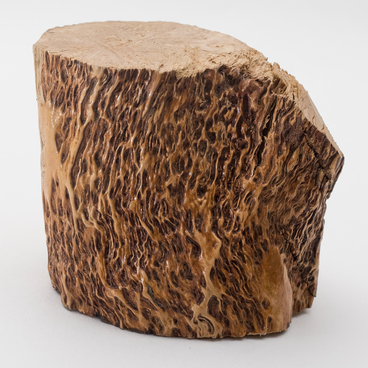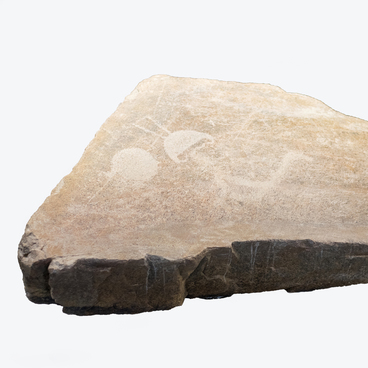Skeletons or fragments of mammoths are found in permafrost regions or in places where glaciers descend. The mammoth is an ancient herbivore. Scientists examined the contents of their stomachs and found that mammoths ate grass, as well as willow, larch, and even pine branches.
Mammoths were not the ancestors of modern elephants, these two genera of the elephant family developed in parallel. Adults reached a height of 5.5 meters and weighed over 10 tons. Their life span was 120 years.
At the beginning of the post-glacial period, mammoths became extinct. But the fact that these animals lived in these places is evidenced by rare finds. The bones of mammoths are still found in the sites of ancient people. Among the rock carvings, there are also images of mammoths. Handicrafts made from the tusks and teeth of this animal have also been preserved. Products from molars in the old days were valued higher since the material has a multi-layer structure with beautiful color transitions: beige, black, and orange.
The mammoth tooth on display was discovered in 1961 in the Pudozh region near the village of Kubovo. It is traditional for the teeth of these animals of yellow-brown color; for greater safety, it was decided to varnish the surface. Deep wavy grooves are visible on the chewing surface, and cracks on the outside.
This mammoth tooth is presented in the section of the permanent exhibition “Traces of the Glacier”. The section is devoted to the history of the Karelian territory in the Quaternary period of the Cenozoic era. The Quaternary Period (Anthropogenic) is the latest of the geological periods in the history of the Earth: it began 1 million 670 thousand years ago and continues to this day. It is characterized by repeated global climate changes; these periods are accompanied by the growth of glaciers. Europe, including the territory of Karelia, has gone through four long ice ages, which were replaced by interglacial periods.
The last, but not the largest in area, was the Valdai glaciation: an area of 3 million square kilometers was covered with ice. The thickness of the ice cap in some places could reach three kilometers. The center of the glaciation was in the northern part of the Scandinavian mountains.
The melting of the glacier began as a result of climate warming about 15 thousand years ago, from the southeast. About 9.5 thousand years ago, the territory of Karelia was completely ice-free. As a result, the modern relief was finally formed here: the continental ice did not change the crystalline foundation, but only gave it a peculiar look — they polished and smoothed the granite massifs, creating bizarre “lambs foreheads” and curly rocks.
Mammoths were not the ancestors of modern elephants, these two genera of the elephant family developed in parallel. Adults reached a height of 5.5 meters and weighed over 10 tons. Their life span was 120 years.
At the beginning of the post-glacial period, mammoths became extinct. But the fact that these animals lived in these places is evidenced by rare finds. The bones of mammoths are still found in the sites of ancient people. Among the rock carvings, there are also images of mammoths. Handicrafts made from the tusks and teeth of this animal have also been preserved. Products from molars in the old days were valued higher since the material has a multi-layer structure with beautiful color transitions: beige, black, and orange.
The mammoth tooth on display was discovered in 1961 in the Pudozh region near the village of Kubovo. It is traditional for the teeth of these animals of yellow-brown color; for greater safety, it was decided to varnish the surface. Deep wavy grooves are visible on the chewing surface, and cracks on the outside.
This mammoth tooth is presented in the section of the permanent exhibition “Traces of the Glacier”. The section is devoted to the history of the Karelian territory in the Quaternary period of the Cenozoic era. The Quaternary Period (Anthropogenic) is the latest of the geological periods in the history of the Earth: it began 1 million 670 thousand years ago and continues to this day. It is characterized by repeated global climate changes; these periods are accompanied by the growth of glaciers. Europe, including the territory of Karelia, has gone through four long ice ages, which were replaced by interglacial periods.
The last, but not the largest in area, was the Valdai glaciation: an area of 3 million square kilometers was covered with ice. The thickness of the ice cap in some places could reach three kilometers. The center of the glaciation was in the northern part of the Scandinavian mountains.
The melting of the glacier began as a result of climate warming about 15 thousand years ago, from the southeast. About 9.5 thousand years ago, the territory of Karelia was completely ice-free. As a result, the modern relief was finally formed here: the continental ice did not change the crystalline foundation, but only gave it a peculiar look — they polished and smoothed the granite massifs, creating bizarre “lambs foreheads” and curly rocks.



